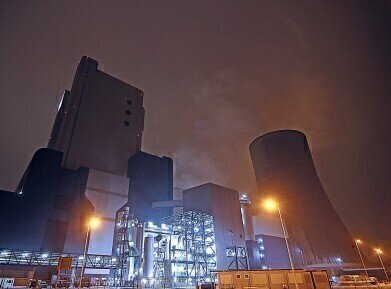Air monitoring
Are China's New Coal Plants a Waste?
Dec 11 2016
The Chinese government has come under heavy criticism from London-based climate group Carbon Tracker Initiative, who claim the country plans to waste as much as £385 billion on new coal-fired power plants.
Carbon Tracker argues that as the biggest emitter of carbon worldwide, China already has an excess amount of coal plants and that in order to meet its goals as laid out at the COP21 talks in Paris last year, it should be reducing capacity or shutting plants down, not building new ones.
Old habits die hard
At present, China is home to the second biggest economy in the world and its astronomic rise to the top of the financial world was boosted primarily by its extensive network of coal-powered plants. Carbon Tracker estimate that the country has enough plants to generate 895GW of energy across the nation, supplying more than half of their electricity needs.
However, mounting concerns over the pollution levels in the Asian superpower (which has long flirted with the title of most polluted country in the world) have led to the government entering a new era in Chinese air quality monitoring. Among other measures, China has poured more money into renewables than any other country and made concerted efforts to clean up the airwaves of its big cities.
However, the government has been willing to roll back coal output. Though Beijing had set itself a target of reducing coal capacity by 250 million tonnes by the end of the year (and allegedly reached that target in October), capacity reduction does not always equate to lower output. The reasons for this are the significant numbers of workers who owe their livelihood to coal; shutting down plants could potentially lead to mass unemployment and unrest, which is what the government fears most.
Now, Carbon Tracker have accused the Chinese government of investing almost £400 billion in new plants, despite the fact that it only operates most of its existing ones at about half capacity.
“A microcosm of wider structural woes”
Carbon Tracker, who specialise in monitoring atmospheric carbon dioxide in the vicinity of coal-fired power plants, claimed that 205GW of capacity were already under construction in China, with an additional 495GW earmarked for construction in the near future.
“This misallocation of capital is a microcosm of wider structural woes within the Chinese economy,” says the report. “China’s rapid economic growth, demographic profile and geographical size has meant it often made sense for the government to build power infrastructure first and ask questions later. The days when China could grow at a fast pace by accumulating capital, safe in the knowledge that this capital would achieve high returns, appear to be over.”
Carbon Tracker estimated the total cost of these new installations at £385 billion, working out to £630 million per KW. In the past, Carbon Tracker has advised that continuing to blindly invest in coal could lead to another financial crash with disastrous repercussions across the globe. On the other hand, the company argue that even if energy needs continued to grow at an inflated rate of 5% in China over the next four years, and all plants were run at just 45% capacity, the country would still produce enough energy to meet its needs.
As such, investing in further sources of coal-fired energy production appear to be a giant waste of investment capital and a blow to the hopes of environmentalists everywhere.
Digital Edition
IET 35.2 March
April 2025
Air Monitoring - Probe Sampling in Hazardous Areas Under Extreme Conditions - New, Game-Changing Sensor for Methane Emissions - Blue Sky Thinking: a 50-year Retrospective on Technological Prog...
View all digital editions
Events
Apr 10 2025 Beijing, China
Apr 10 2025 Beijing, China
Apr 10 2025 Beijing, China
Apr 21 2025 Shanghai, China
Apr 22 2025 Hammamet, Tunisia


.jpg)
















